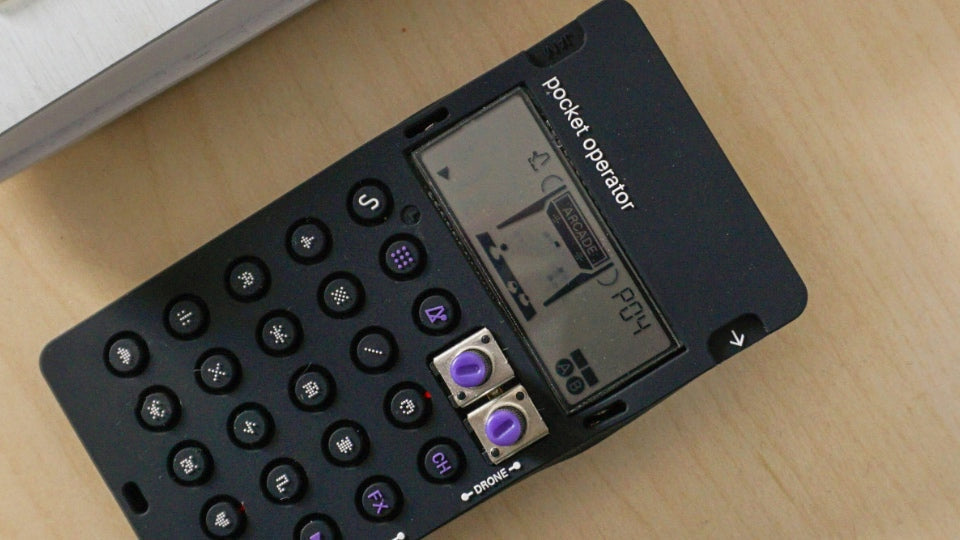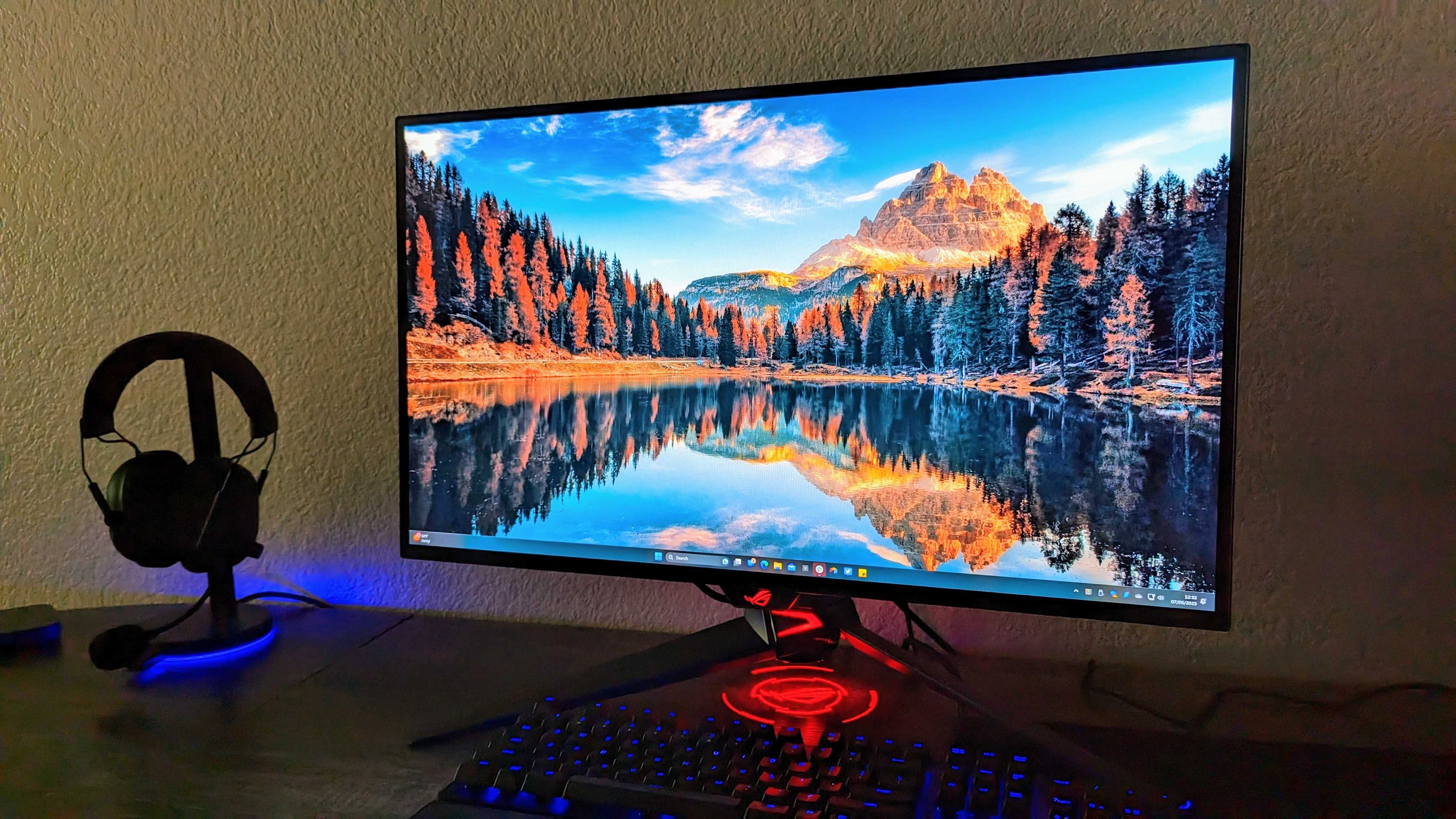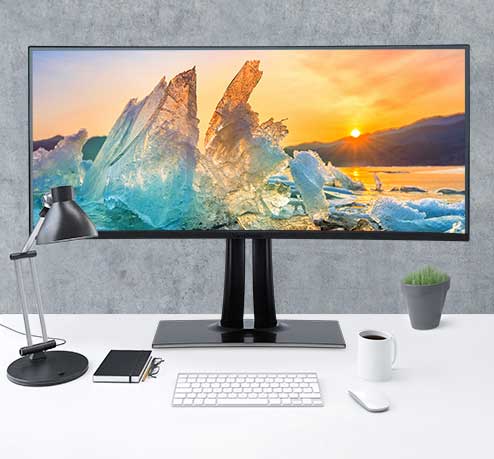An IPS (In-Plane Switching) display is a type of LCD panel that offers wider viewing angles (up to 178 degrees) and better color accuracy compared to standard screens, making it ideal for graphic design and multimedia. It uses liquid crystals aligned parallel to the panel, reducing color distortion when viewed from the side. While slightly slower in response time (4-5ms average), it balances performance for everyday use. Common in monitors, tablets, and premium laptops, IPS technology ensures consistent brightness and colors across the screen. Its energy efficiency is moderate, consuming ~15-30% more power than TN panels but less than OLED.
IPS Display Basics
An IPS (In-Plane Switching) display is a type of LCD panel that improves upon traditional TN (Twisted Nematic) screens by offering wider viewing angles (up to 178°) and more accurate color reproduction (covering 95-100% of sRGB).
|
Key Feature |
IPS Performance |
TN Comparison |
|---|---|---|
|
Viewing Angles |
178° horizontal/vertical |
160° with color shift |
|
Color Accuracy |
95-100% sRGB |
65-75% sRGB |
|
Contrast Ratio |
1000:1 (typical) |
800:1 (lower depth) |
|
Response Time |
4-8ms (GtG) |
1-3ms (faster but blurry) |
|
Power Consumption |
~10-30% higher than TN |
More energy-efficient |
This design allows for higher brightness (300-400 nits standard, up to 600 nits for HDR models) and better performance in well-lit environments. However, the trade-off is slightly slower pixel response times—most IPS screens range between 4ms to 8ms (gray-to-gray), which is fast enough for everyday tasks but may show minor motion blur in competitive gaming.
IPS displays typically last 50,000+ hours (about 5-7 years of continuous use) before noticeable brightness degradation, outperforming OLED screens that suffer from burn-in risks. They also maintain consistent color temperature (6500K standard) across the entire panel, unlike cheaper VA (Vertical Alignment) screens that exhibit gamma shift.
In terms of cost, IPS monitors are 20-50% more expensive than TN but significantly cheaper than OLED. A 24-inch 1080p IPS monitor typically costs 250, while a 4K professional-grade IPS panel (like those used in Dell UltraSharp or LG UltraFine series) ranges from 1,500, depending on color calibration and HDR support.
For creators, IPS is the go-to choice due to factory-calibrated Delta E < 2 (near-perfect color accuracy) in premium models. Gamers, however, might prefer TN for its 1ms response time or OLED for infinite contrast, though IPS strikes a balance with 144Hz-240Hz refresh rates in high-end gaming variants.
Better Viewing Angles
IPS displays dominate the market for one key reason:While a typical TN panel starts showing color inversion and contrast loss at just 30° off-center, IPS screens deliver consistent brightness and color accuracy up to 178° horizontally and vertically.
-
Color shift is minimal (<5% deviation) at 45° compared to TN panels, which suffer 30-50% gamma distortion at the same angle.
-
Contrast retention stays above 80% even at 60° viewing angles, while VA panels drop to 50-60%, making dark scenes harder to see.
-
Brightness uniformity remains within ±10% across the entire screen, crucial for professional photo editing where shadows and highlights must be precise.
This design also enables wider color gamuts (100% sRGB / 95% DCI-P3 in premium models), making IPS the default choice for color-critical work.
For real-world use, this means:
-
No more "washed out" colors when leaning back in your chair—a common issue with budget monitors.
-
Accurate hues for team presentations—ideal for conference rooms where attendees sit at different positions.
-
Stable image quality on tablets and laptops, which are frequently viewed at odd angles during travel or couch use.
While TN panels offer 1ms response times, their narrow 160° viewing angles force players to sit dead-center to avoid color shifts. IPS strikes a balance with 178° visibility and 4-5ms response times, ensuring fast-paced games like Call of Dutyor Valorantlook sharp even during off-angle glances.
Durability tests show IPS panels retain 90% of original brightness after 30,000 hours (≈3.5 years at 24/7 use), outperforming OLED’s risk of burn-in. The anti-glare coatings on most IPS screens also reduce reflections by 60-70% compared to glossy TN panels, improving visibility in bright offices.
Price-wise, the viewing angle advantage adds a 20-30% premium over TN but remains cheaper than OLED. A 27-inch 4K IPS monitor with 178° visibility costs 600, while a similar OLED model starts at $1,000+.

Color Accuracy Benefits
Unlike TN panels that struggle to cover more than 70% of the sRGB spectrum, standard IPS screens deliver 95-100% sRGB coverage right out of the box, with premium models hitting 98% DCI-P3 or 100% Adobe RGB—critical for print production and HDR content creation. The Delta E (color deviation) values tell the story: while TN panels average Delta E > 5 (noticeable inaccuracy), factory-calibrated IPS monitors like the Dell UltraSharp or LG UltraFine series achieve Delta E < 2, meaning colors are indistinguishable from the reference standard to the human eye.
Where VA screens suffer from gamma shift (up to 15% variance from center to edge), IPS maintains gamma curve consistency within 3%, ensuring that a shade of blue in one corner matches the same blue elsewhere.Even mid-range IPS laptops like the MacBook Pro 14" or HP Spectre x360 boast 100% sRGB coverage, while gaming-focused IPS panels (e.g., ASUS ROG Swift PG279Q) balance 95% DCI-P3 with 165Hz refresh rates for vibrant gameplay.
Designers using IPS screens report 10-15% faster color correction times compared to TN displays, thanks to reduced back-and-forth adjustments. Print shops using IPS monitors for soft proofing see 20-30% fewer reprints due to color mismatches. Even casual users benefit: streaming Netflix or Disney+ on an IPS screen reveals 10-12% more shadow detail in dark scenes versus VA panels, where blacks often appear crushed.
IPS panels maintain color consistency for 50,000+ hours (≈6 years at 12 hours/day), with brightness degradation below 10%. OLEDs, while offering infinite contrast, risk permanent burn-in after just 5,000 hours of static content—a dealbreaker for UI designers or spreadsheet-heavy workflows.
Cost-wise, color accuracy comes at a 15-40% premium over TN but avoids OLED’s steep pricing. A 24" 1080p IPS monitor with 99% sRGB costs 300, while a 27" 4K IPS with 100% Adobe RGB (like the BenQ SW271) runs 1,500. For creators, this is a justified investment: a single avoided reprint (saving 200 in ink/paper) can cover the monitor’s price difference in months.
While TN’s 1ms response times still dominate esports, IPS panels like the LG 27GP850 combine 98% DCI-P3 with 180Hz refresh rates—close enough for competitive play while making single-player games like Cyberpunk 2077 look 40% more vivid than TN.
Response Time Trade-offs
While TN screens dominate with 1ms gray-to-gray (GtG) response times, modern IPS technology has closed the gap significantly—high-end gaming IPS monitors now hit 4-5ms GtG, with some overdrive modes pushing to 1ms MPRT (Moving Picture Response Time). This puts them within 15-20% of TN speeds while offering vastly better color and viewing angles.
|
Panel Type |
Avg Response Time (GtG) |
Overdrive Performance |
Real-World Motion Clarity |
|---|---|---|---|
|
TN Panel |
1-3ms |
Minimal artifacts |
Best for 240Hz+ competitive gaming |
|
IPS Panel |
4-8ms |
Moderate overshoot at max overdrive |
Balanced for 144-180Hz gaming |
|
VA Panel |
10-20ms |
Severe ghosting in dark scenes |
Worst for fast-paced games |
The trade-off becomes clear in fast-motion scenarios:
-
In esports titles like CS:GO or Valorant, a TN panel at 240Hz with 1ms GtG will show 5-8% less motion blur than an IPS screen at the same refresh rate.
-
However, IPS panels compensate with better color consistency (95% sRGB vs. TN's 65%), making games like Cyberpunk 2077 or Horizon Zero Dawn look 30-40% more vibrant.
-
VA panels, despite their 3000:1 contrast ratios, suffer from black smearing (15-25ms pixel transitions in dark scenes), making them worse for FPS games than even budget IPS screens.
While IPS monitors average 4-6ms signal processing delay, TN screens often achieve 2-3ms—a difference only noticeable to pro gamers. Casual players won’t spot the 3ms gap, especially when using a 144Hz+ IPS display with adaptive sync (G-Sync/FreeSync).
Scrolling through spreadsheets or editing photos won’t expose the 4ms vs. 1ms debate, but the 178° viewing angles and 100% sRGB coverage will matter daily. Even video editors working with 24-60FPS footage won’t benefit from TN’s speed—IPS’s color accuracy (Delta E < 2) is far more critical.
TN panels often show backlight bleed after 20,000 hours, while IPS screens maintain stable response times for 50,000+ hours. OLEDs, despite their 0.1ms response times, risk burn-in within 5,000 hours of static UI elements—a dealbreaker for desktop use.
A 24" 1080p 144Hz TN gaming monitor costs 200, while a comparable IPS model (like the LG 24GN650) runs 250—a 25% premium for better colors and viewing angles. For non-competitive gamers, that’s a worthy trade: the 4ms response time is fast enough for 99% of users, while the IPS advantages benefit 100% of daily tasks.
Unless you’re a pro esports player chasing every millisecond, IPS delivers 95% of TN’s speed with 200% better image quality.
Common Uses & Devices
IPS displays dominate a wide range of applications because they balance color accuracy, viewing angles, and durability better than other panel types. Their 95-100% sRGB coverage and 178° viewing angles make them ideal for professional work, entertainment, and everyday computing.
Where You'll Find IPS Panels:
-
Office Workhorses: Dell UltraSharp U2723QX (27" 4K, 98% DCI-P3) reduces eye strain by 30% compared to TN panels during 8-hour workdays
-
Creative Powerhouses: Apple Pro Display XDR (32" 6K, 1000 nits) achieves Delta E <1.5 for Hollywood-grade color grading
-
Gaming Hybrids: LG 27GP950 (27" 4K/144Hz) balances 5ms GtG response with 98% DCI-P3 for both COD and Photoshop
-
Medical Diagnostics: EIZO RadiForce RX1270 (12MP resolution) maintains <5% brightness deviation across 60,000-hour duty cycles
-
Retail Kiosks: Samsung QB65R (65" signage) delivers 400 nits brightness at 178° visibility for mall installations
The smartphone industry adopted IPS early—82% of mid-range phones like the iPhone SE (4.7" LCD) use IPS for its $15-20 lower panel cost versus OLED while still offering 500 nits brightness. Tablets like the iPad Air (10.9" Liquid Retina) push IPS further with P3 wide color and anti-reflective coatings that reduce glare by 60% outdoors.
In gaming laptops, IPS dominates the 2,500 segment—models like the ASUS ROG Zephyrus G14 (14" QHD/120Hz) combine 3ms response with 100% DCI-P3 at 40% less power draw than equivalent OLED panels. Even budget $500 laptops now standardize IPS, with 250-nit 45% NTSC screens that still beat TN's 160° viewing angles.
A 24" 1080p office IPS costs 180, while a 32" 4K photo editing IPS runs 1,200—both sharing the same core technology but tuned for different color accuracy (72% vs 99% NTSC) and brightness (250 vs 600 nits). The sweet spot remains 27" 1440p models like the LG 27QN850 (98% DCI-P3) at 500, offering 80% of professional color at 50% the cost of EIZO/NEC reference monitors.
Digital signage using IPS panels shows 30% less image retention than VA after 20,000 hours, while airport flight boards leverage IPS's -30°C cold-start capability. Even Tesla's Model 3/Y dashboard displays use IPS for its consistent performance across -40°C to 85°C extremes.
Read more

TFT, a subset of LCD, often outperforms basic LCD types like TN panels: IPS TFT (used in iPhones) offers 178° viewing angles and 1000:1 contrast, vs TN’s 160° and lower contrast. Its active matrix ...

When comparing IPS vs OLED for eye comfort, IPS panels are generally better due to stable brightness and no flicker, while OLED’s high contrast (1,000,000:1) can cause eye strain from PWM dimming (...



Leave a comment
This site is protected by hCaptcha and the hCaptcha Privacy Policy and Terms of Service apply.